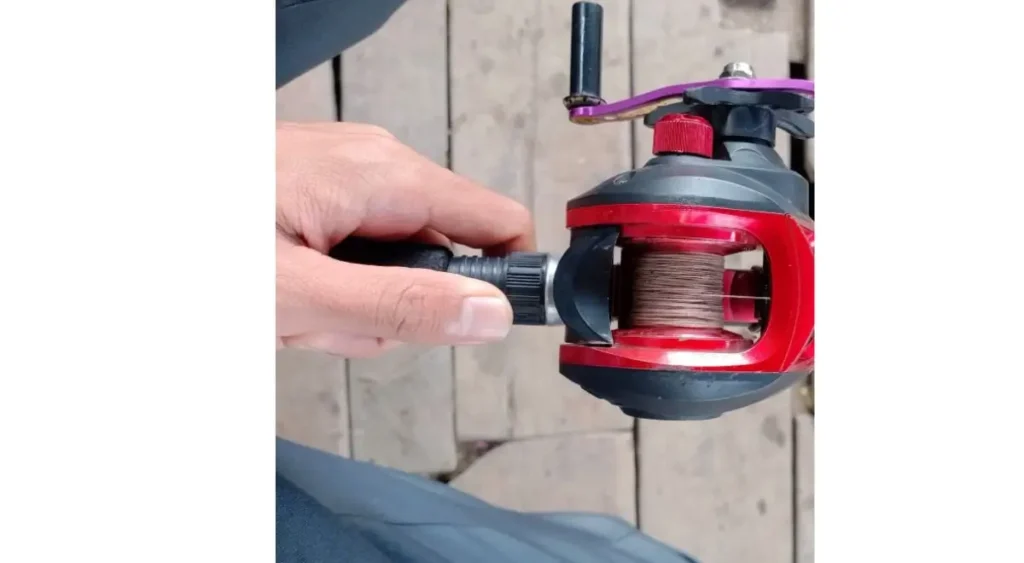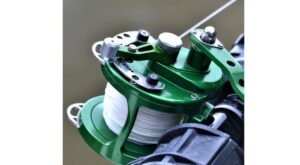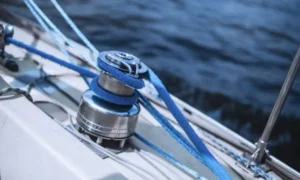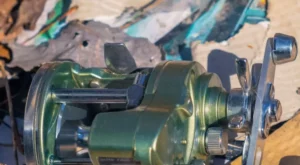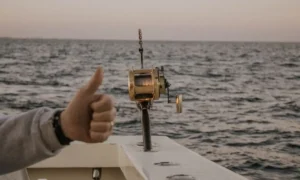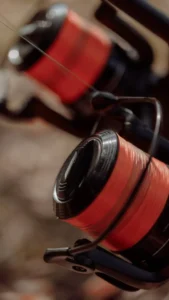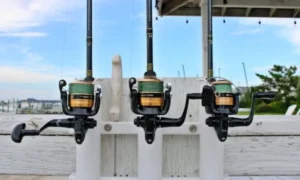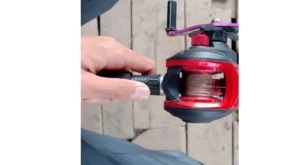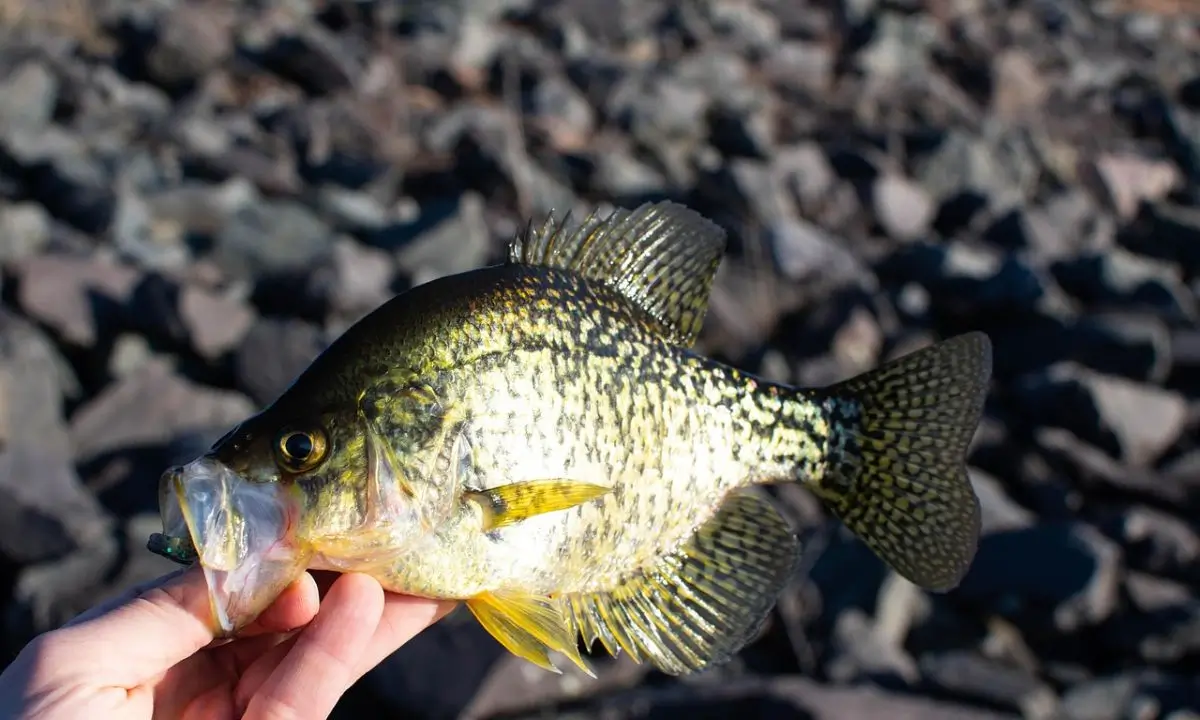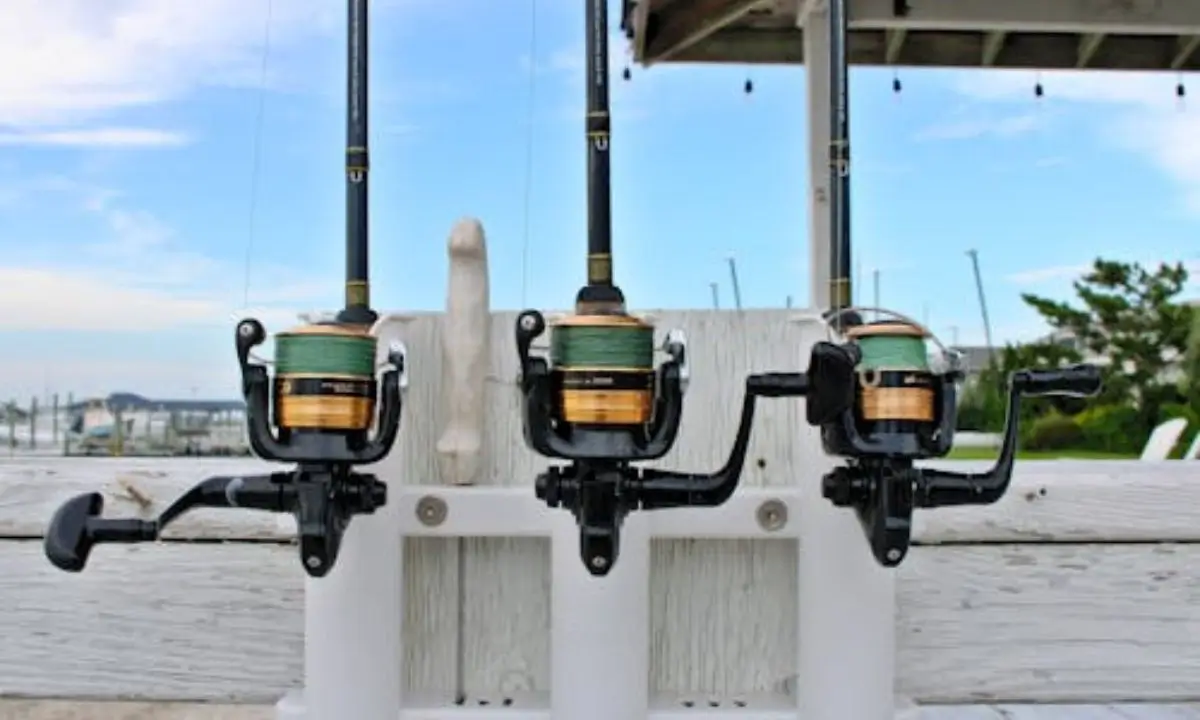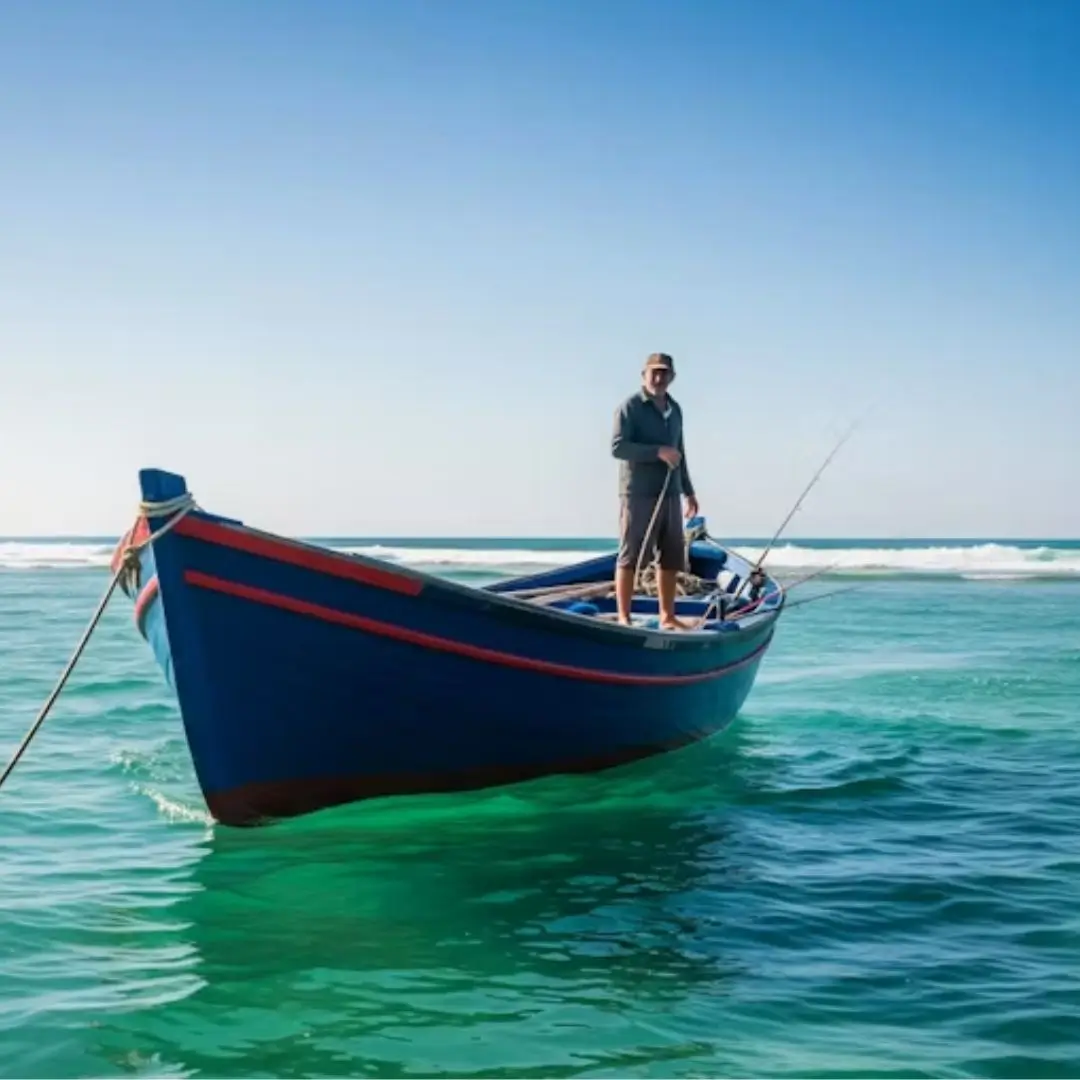The best gear ratio for fishing reels depends on what you fish, where, and how fast you want to retrieve. Medium ratios (5.5:1–6.5:1) are versatile, low ratios offer power for heavy lures, and high ratios give speed for topwater or fast action techniques.
Introduction:
Struggling to find the best gear ratio for fishing reels? Discover expert tips from 5+ years of ahi fishing experience to choose the perfect reel ratio.
Choosing the best gear ratio for fishing reels Beginners often find the Best Gear Ratio for Fishing Reels confusing, because specs like 5.4:1 or 7.1:1 aren’t easy to understand. Simply put, gear ratio describes how many times the spool turns with one complete turn of the handle. This affects how fast you can retrieve line and how much power you have fighting fish.
By the end of this guide, you’ll clearly understand low, medium, and high gear ratios, and which one fits your fishing style—whether you’re using heavy lures in deep water, chasing bass in freshwater, or tossing topwater baits at dawn. With proper reel selection, retrieval speed, and lure matching, your fishing efficiency and catch success will improve significantly. details Reel Gear Ratio Chart
📘 What is Gear Ratio in Fishing Reels?
The gear ratio in fishing reels simply explains how fast or slow the spool retrieves line when you turn the handle. It is written in numbers like 5.4:1, 6.2:1, or 7.1:1. The first number shows how many spool turns happen with one full handle rotation. A lower ratio (around 5:1) gives more cranking power, which is helpful for pulling heavy lures or fighting strong fish. A medium ratio (around 6:1) offers balance, making it versatile for different fishing styles. A higher ratio (7:1 or above) retrieves the line quickly, which is perfect for topwater baits or when you need fast action. Knowing gear ratio helps you choose the right reel for your fishing style.
🎣 Why Gear Ratio Matters in Fishing
The gear ratio of a fishing reel plays a big role in how successful and enjoyable your fishing trip can be. It controls how much line is retrieved with each handle turn, which directly affects speed, power, and efficiency. If the gear ratio is too high or too low for the technique you are using, it can make fishing harder than it needs to be.
For example, when you’re targeting large fish or using heavy baits, a lower gear ratio gives more torque and strength to reel them in without tiring your arms. On the other hand, if you’re fishing with fast-moving lures or need quick hook sets, a higher gear ratio saves time and improves reaction speed. Medium gear ratios are often preferred by beginners because they provide a balance between speed and power.
In short, choosing the right gear ratio ensures that your reel matches your fishing style. It makes casting, retrieving, and fighting fish smoother and more effective, which ultimately improves your chances of success on the water.
1:Choosing the Right Gear Ratio Can Make or Break Your Catch:
When I started fishing for ahi (yellowfin tuna) over five years ago, I had no idea how much reel gear ratio would impact my success. Fast forward to today, and I wouldn’t dare head offshore without the right setup.
If you’re wondering what is a good gear ratio for fishing, especially for big-game fish like ahi, you’ve come to the right place. Whether you’re a beginner or an experienced angler looking to fine-tune your technique, this blog will help you understand gear ratios in-depth and how to choose the best one for your style.
2. ⚙️ What is Gear Ratio in Fishing?
.In simple terms, the gear ratio of a fishing reel shows how many times the spool spins with one full turn of the handle.
🎯 Example:
Ans: For example, with a 5.4:1 gear ratio, the spool spins 5.4 times each time you turn the handle once.
This ratio impacts how fast you can retrieve your line and how much power you’ll have against the fish. details Fishing Reel Gear Ratio
3. 🧠 Why Does Gear Ratio Matter in Fishing?
Gear ratio affects more than just speed — it influences power, lure control, and how effective you are in different water conditions.
🚀 Speed vs. Power:
- Higher gear ratios (like 7.1:1) = faster retrieval, less torque.
For example, with a 5.4:1 gear ratio, the spool spins 5.4 times each time you turn the handle once.”
🎣 Best Gear Ratios for Different Fishing Techniques
Every fishing technique works better with a specific gear ratio. If you match your reel’s speed with the right style of fishing, you’ll get smoother control, save energy, and increase your catch rate.
- Low Gear Ratio (≤5.4:1)
- Best for: Deep water fishing, crankbaits, slow-moving lures.
- Why: More torque helps pull heavy lures and fight strong fish with less effort.
- Downside: Slow line retrieve speed, not ideal for fast action fishing.
- Medium Gear Ratio (6.0:1–6.4:1)
- Best for: Beginners, all-around fishing, spinnerbaits, jigs.
- Why: Balanced speed and power make it suitable for both freshwater and saltwater fishing.
- Downside: Not the fastest for competitive anglers, but perfect for learning.
- High Gear Ratio (≥7.0:1)
- Best for: Topwater lures, jerkbaits, fast retrieves.
- Why: Lets you cover water quickly and react fast when fish strike.
- Downside: Less torque, so not great for heavy lures or big fish battles.
👉 For most beginners, a medium gear ratio reel is the smartest choice. It offers flexibility and works well across different fishing situations without overcomplicating things.
🎣 Real-World Ahi Fishing Example:
When chasing ahi offshore, I prefer a lower gear ratio that offers cranking power to handle their deep runs. High-speed reels burn out your arms and don’t provide enough control when the tuna dives. more info What Size Hooks
4. 🔄 Different Types of Gear Ratios (with Examples)
Let’s break down the 3 main gear ratio categories, so you can pick what suits your fishing goals.
🔹 Low Gear Ratio (5.1:1 – 5.4:1)
Best for: Deep cranking, bottom fishing, trolling
Pros:
- More torque
- Easier to fight large fish
Cons: - Slower line retrieval
Use Case: Fighting ahi in deep water or when slow rolling heavy baits.
🔹 Medium Gear Ratio (6.2:1 – 6.4:1)
Best for: All-around use
Pros:
- Balanced speed and power
Cons: - Not optimized for very fast or very slow retrieves
Use Case: Great choice for beginners trying different techniques.
🔹 High Gear Ratio (7.1:1 – 8.1:1)
Best for: Tumwater, flipping, finesse fishing
Pros:
- Fast retrieval
Cons: - Less torque
Use Case: Ideal for bass fishing, not suitable for heavy-duty tuna fights.
5. 🎯 What Is a Good Gear Ratio for Fishing?
Now, let’s directly answer your main query: What is a good gear ratio for fishing?
✅ Short Answer: It depends on your target species, technique, and reel type. details Best Reel Grease
🔍 Recommended Gear Ratios by Scenario:
| Fishing Style | Ideal Gear Ratio | Why? |
| Ahi/Tuna | 5.1:1 – 5.4:1 | More torque for deep water battles |
| Bass Fishing | 6.4:1 – 7.1:1 | Fast action for topwater or flipping |
| Catfish | 5.3:1 – 6.2:1 | Power and versatility |
| Trolling | 4.9:1 – 5.4:1 | Slow and steady wins the race |
| Finesse Fishing | 7.1:1+ | Quick hooksets and light baits |
| Spinning Reel | 5.2:1 – 6.2:1 | Balanced for most scenarios |
| Baitcasting Reel | 6.4:1 – 7.1:1 | More control and speed |
Remember, there is no universal “best” — the best gear ratio for fishing depends entirely on what you’re targeting and how you fish.
6. 🛒 How to Choose the Right Gear Ratio (Buyer’s Guide)
Here are a few expert tips to help you pick your ideal ratio:
- 🎯 Fishing Technique – Trolling? Go low. Jigging? Go mid to high.
- 🌊 Water Depth – Deeper water = lower gear ratio for more power.
- 🐟 Target Species – Big game fish like ahi need muscle, not speed.
- 🎣 Lure Type – Fast gear ratios work well with topwater baits, helping you keep them moving effectively across the surface.
- 🪝 Reel Type – Spinning reels often offer more finesse; bait casters give you power and precision.
-
7. 💡 Pro Tips from an Experienced Ahi Fisherman
After years of offshore fishing for ahi, here are a few lessons I’ve learned:
- “Don’t overlook the power of a 5.1:1 reel when you’re up against a strong yellowfin—it delivers serious torque.”
- “Speed kills accuracy — slow and steady helps you land more fish offshore.”
- “Switching reels mid-trip wastes time. Carry two reels with different gear ratios.”
🧠 Pro Tip: Match your gear ratio to the environment first, then your fishing style.
❌ Common Mistakes Beginners Make with Gear Ratios
When starting out, many beginners struggle with choosing the right gear ratio. Here are the most common mistakes and how to avoid them:
- Picking Too High or Too Low
Some new anglers choose a very high ratio thinking “faster is better.” Others go too low, hoping for more power. Both can hurt performance if they don’t match your fishing style. - Ignoring the Lure Type
Every lure works differently. Crankbaits need slower reels, while topwater lures need speed. Beginners often ignore this and end up wasting energy or missing strikes. - Forgetting Line Retrieve Speed
Gear ratio isn’t just about numbers—it also affects how much line comes in per turn. Choosing a reel without checking the line retrieve rate can make fishing harder. - Overcomplicating Choices
Many new anglers stress over ratios and buy multiple reels. The truth is, a medium gear ratio (6.0:1–6.4:1) works best for most beginners and fishing conditions.
👉 If you’re just starting, keep it simple. Match your reel to your main fishing style, and upgrade later when you gain more experience. details Grease Fishing Reel
🎣 Best Fishing Reels by Gear Ratio
Choosing the right fishing reel is easier when you know which models perform best for each gear ratio. Below are some tried-and-tested options that work well for different fishing needs.
- Low Gear Ratio Reels (≤5.4:1)
- Best for: Crankbaits, deep water fishing, heavy lures.
- Example: Shimano Calcutta 400B – A reliable reel that offers slow, steady retrieves with extra power for pulling fish from deep waters.
- Medium Gear Ratio Reels (6.0:1 – 6.4:1)
- Best for: Beginners and all-around fishing.
- Example: Abu Garcia Revo SX 6.4:1 – Perfect balance between speed and power, making it ideal for bass fishing and general freshwater use.
- High Gear Ratio Reels (≥7.0:1)
- Best for: Topwater lures, flipping, fast retrieves, and tournament fishing.
- Example: Daiwa Tatula SV TW 7.1:1 – Designed for anglers who need speed and precision, helping you cover water quickly.
- Versatile Choice
- Penn Battle III 6.2:1 – A saltwater-ready reel that offers both strength and smoothness, making it popular for inshore fishing in places like Florida.
📊 Comparison Table Idea:
| Gear Ratio | Best Use | Example Reel |
| 5.4:1 | Deep water, heavy lures | Shimano Calcutta 400B |
| 6.4:1 | All-round, beginner-friendly | Abu Garcia Revo SX 6.4:1 |
| 7.1:1 | Fast retrieves, topwater | Daiwa Tatula SV TW 7.1:1 |
| 6.2:1 | Saltwater versatility | Penn Battle III 6.2:1 |
👉 For beginners, a medium gear ratio reel like 6.2:1 or 6.4:1 is the safest starting point. Once you gain more experience, you can add specialized reels for fast or slow retrieves.
🎯 Pro Tips & Expert Advice
From my own fishing experience in Florida waters, I’ve learned that gear ratio is not about speed alone—it’s about balance. Many beginners rush to buy the fastest reel, but in reality, matching your reel to the rod, line, and lure gives you the best results.
👉 When to use slow reels (5.4:1): Best for deep crankbaits or when targeting bottom-feeding fish. The slower retrieve keeps the lure in the strike zone longer.
👉 When to use medium reels (6.2:1–6.4:1): Ideal for beginners and versatile fishing. This ratio works well in both freshwater and saltwater, especially for bass in lakes or snook in Florida bays.
👉 When to use fast reels (7.0:1+): Perfect for topwater lures, flipping, and tournament-style fishing where speed matters most. But remember, a high-speed reel can tire you out if used for heavy lures all day.
💡 Expert Tip: Don’t focus only on gear ratio—also check the line retrieve per crank (inches per turn). This tells you the real speed and helps you pick the right reel for your fishing style. Explain Fishing Reel Gear Ratios Guide
✅ Conclusion
Choosing the best gear ratio for fishing reels can feel confusing at first, but it doesn’t have to be. By understanding the difference between slow, medium, and fast reels, you can match the right gear ratio to your fishing style. Beginners should start with a medium gear ratio reel (around 6.2:1) because it offers balance, control, and versatility for most fishing conditions. Remember, no single reel is perfect for every situation—your choice depends on the fish, lure, and technique. Don’t overthink it—start simple and build your skills over time.
👉 Want more? Check out my other fishing guides for expert tips.
👉 Looking for reel recommendations? Check out our top-rated fishing reels for every gear ratio range.
✍️ Written by Jihad – Professional Fisherman
Website: profishingbyjihad.com
What is a good gear ratio for beginners?
A medium gear ratio (5.5:1–6.5:1) works best for beginners. It gives enough power and speed without feeling too hard to manage in different fishing situations.
Is a higher gear ratio always better?
No. Higher gear ratio gives faster line retrieve but sacrifices torque. For heavy lures or big fish, a lower ratio works better; choose based on fishing style.
Which gear ratio is best for bass fishing?
For bass, try 6.2:1–7.1:1 depending on lure type. Use lower ratio for crankbaits, higher for topwater or fast-moving lures.
Can I use the same gear ratio for spinning and baitcasting?
Yes, but performance differs. Baitcasters handle higher ratios better with precision; spinning reels work well with medium ratios for most techniques.
What gear ratio should I use for deep-water fishing?
Use low gear ratios (≈4.5:1–5.4:1) in deep water. They offer better torque to pull lures up and control strong fish from deeper waters.
Does gear ratio affect lure action?
Definitely. Low ratio lets crankbaits dive properly; medium ratio balances speed and action; high ratio makes lures move fast on surface like topwater.
How do I match gear ratio with lure and line?
Choose gear ratio by lure type (heavy vs light), line strength, and rod power. Balanced setup reduces strain and improves fishing control.


